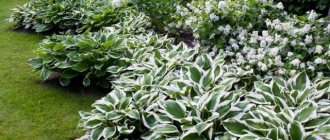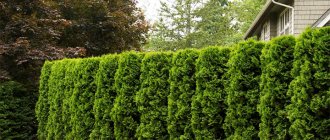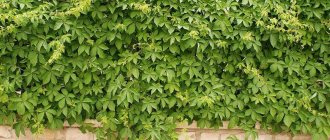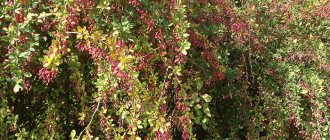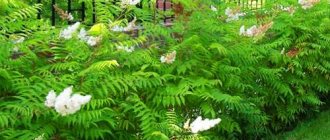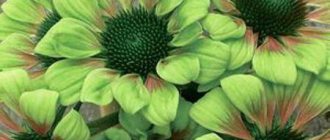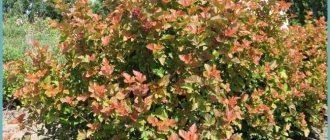Characteristics of the bladderwort
A shrub of the Rosaceae family became popular in Russia not so long ago. More often this plant is cultivated in more stable climatic conditions, in North America. Bladderwort is an unpretentious shrub with good adaptation to a new location.
Red-leaved bladderwort is more common in our open spaces; it includes several varieties. It grows up to 3 meters in height, the crown grows densely, the branches are slightly drooping. The leaves are similar in shape to currant leaves, but more matte. Over the course of the season, the leaves change color from yellow to green, and in the fall they turn red.
Attention! Despite recommendations for planting bladderwort in the fall, in some regions it is safer to plant in the spring so that the plant is not caught by sudden frosts.
Among the advantages of vesicular carps can be noted:
- A variety of color colors of varieties, in addition, periodic changes in foliage color according to the seasons.
- Easy to care for and grow in open ground.
- Stable immunity to diseases and pests.
- High adaptability to any climate.
- Trimming the vesicle has a positive effect on its decorative qualities.
- In addition to being decorative, a hedge has practical qualities in the form of isolation from dust and prying eyes.
- During the growth process, the fence from the vesicular carp becomes an impassable obstacle.
Pests and diseases
One of the main advantages of bladderwort is that it is practically not susceptible to disease and extremely rarely suffers from attacks by insect pests.
The bladderwort is rarely exposed to diseases and pest attacks.
In some cases, you may notice the appearance of unnaturally yellow leaves on the bushes, which is a sign of chlorosis. The cause of this disease is most often a lack of nitrogen, magnesium or iron in the soil. However, the use of special fertilizers will help to quickly solve the problem and restore the healthy and attractive appearance of the crop.
Where and how to plant bladderwort
The shrub feels good in sunny places. For good growth and adaptation, it is important to choose suitable conditions for the life of the bladderwort. Due to its unpretentiousness, it can be planted in the shade, but it is better that nothing interferes with the light. The planting location is also determined by the condition of the soil. It must have good aeration and enough nutrients.
Planting is carried out in late spring or June, so the bushes will take root before the onset of frost.
Hedge planting scheme
To create a beautiful fence from bladderwrack, you need to think through a planting plan in advance.
The first step is the selection of seedlings; it must be careful and thoughtful:
- It is important to buy quality material; specialized nurseries are the right place to purchase.
- It’s good if there are documents that show the variety and characteristics of the plant.
- It is better to give preference to bushes in containers; they take root better and can be planted at the beginning of autumn.
- Externally, the seedling must be healthy, without signs of disease, rot or fungus.
The second is the place where the hedge is planted:
- The soil for planting must be well-drained.
- When underground water occurs, it is advisable to use drainage.
- If the soil is depleted, you should take care of fertilizers in advance.
After all the preparatory stages, you can begin planting the bladderwort:
- For a hedge, dig a trench to a depth of 60 cm and a width of 50-60 cm.
- The distance between vesicles is made at the rate of 3-4 bushes per meter of trench.
- After laying out the drainage, the soil is mixed with organic or mineral fertilizers.
- Having placed the seedlings with a lump of earth in a hole, they are covered with ready-made soil and trampled down.
- Finish planting by watering and mulching the soil with peat.
Important! At first, young seedlings need to be watered so that the soil is always moist.
How to prepare a landing site
Trimming and planting hedges is not as difficult as it may seem to those who have no experience in this activity. In order to plant a plant, you need to prepare the following tools:
- shovel;
- cord;
- several stakes;
- pruner;
- roulette;
- pitchfork.
In order for the hedge to save the owners of the site from dust and extraneous noise, it is necessary to plant a sufficiently large number of shrubs. If planting occurs in one row, then there are from 3 to 5 bushes per 1 meter of area.
In order for the fence to be perceived as one whole, it is necessary to dig not just holes, but a whole trench. After preparing the ground, the seedlings are installed in a checkerboard pattern in 3 rows.
Preparation stages:
- First, the cord is pulled in the place where the hedge will be located;
- Along the marked line, earth is excavated to a depth of about half a meter. The same distance is made between the edges of the trench;
- the soil at the bottom is loosened with a pitchfork so that organic and mineral fertilizers can be applied;
- Before planting, long or damaged roots of the plant are cut off;
- at the very end, seedlings are lowered into the trench, which are then covered with fertilized soil.
Bush propagation methods
Cuttings are possible if there are strong shoots. The shoots of the bladderwort are cut so that each of them has buds. After soaking for an hour in a root formation stimulator, the cuttings are planted in a mixture of sand and peat under polyethylene. The soil mixture must be kept moist. They can be planted in open areas after a year.
by layering if there is a strong branch as low as possible to the soil. The foliage is removed along the length of the entire branch, leaving only the end. The cuttings are placed in a groove 15 cm deep and sprinkled with soil. With this method, the soil must be moistened without allowing it to dry out. It is better to carry out the procedure in early spring, so that new shoots will take root by winter.
Pruning in spring
Sanitary pruning is performed in early spring, when it is clear which shoots are damaged by frost. The branches are removed partially or completely, it all depends on the degree of their damage. Diseased shoots are not left, even if they are necessary for shaping.
Seedlings at the age of five need rejuvenation. Old shoots interfere with the appearance of young shoots, so they get rid of them.
The following facts indicate the need for anti-aging measures:
- the number of inflorescences on the bush has decreased;
- the flowers became small;
- There is also less foliage.
When rejuvenating pruning, old shoots are removed, leaving small stumps (up to 5 cm in height). To avoid infection, the cuts are covered with garden varnish.
Pruning is carried out in dry weather before sunrise or after sunset, it is better to do this on a cloudy day.
How to care for a hedge
Let's consider the basic rules of care:
- be watered frequently. To adapt to a new place, roots need moisture. Until complete rooting, the bladderwort is watered 3-4 times a week, then less often and only during drought. If it rains regularly, watering is completely unnecessary.
Important! Land with a high clay content should receive less water; moisture stagnates in it, which leads to rotting of the roots.
- Fertilizers for hedges are consumed many times faster due to dense planting. To fertilize plantings of this kind, a certain schedule is needed. Before spring cutting, you need nitrogen, or saltpeter with mullein and urea. This composition is diluted in 20 liters of water and watered on the bladderwort bushes. In the fall, mineral supplements are suitable; they will become a preventive measure for diseases.
Important! In order for microelements to better penetrate the soil and reach the root system, the soil is loosened before applying fertilizers.
- Compost can be used as mulch; it will saturate the soil with useful elements.
When to trim your bladderwort hedge
In order for the hedge to have a beautiful appearance, it is necessary to regularly form the crown. This procedure helps increase the strength of the root system. The timing of pruning depends on the age of the bladderwrack bushes. The bushes need to be trimmed for the first time in the spring after planting the seedlings. During this period, only 15 cm is left from the height of the bush. The second time pruning is carried out a year later, removing 50% of the total green mass of the bush. The sides are shortened by 10 cm; over the summer, the bushes will grow up to 35 cm of shoots around the circumference.
For adult types of bladderwort, there are several types of pruning:
- Sanitary pruning is carried out after winter; at this time, broken or diseased branches should be cut off.
- Formative pruning is carried out at the end of the season. During the summer, you can trim shoots that are out of the shape of the hedge.
Starting from the second year of life of bladderworts, they are cut 5 times a year. This method sets the correct growth of shoots in the future. After 4 years, you can begin to give the hedge a decorative shape, when the side parts of the bush begin to actively grow.
Winter care
It is necessary to cover the bladderwort over the winter in the first year. In general, this plant is winter-hardy, and shelter for mature bushes may be needed only in very cold winters. To prevent freezing, you can mulch the soil, which will protect the roots.
Tips and reviews from gardeners
Olga. Bladderwort has been growing on my site for many years and I can say with confidence that these are hardy plants that never get sick. In addition, they are distinguished by their high ability to self-sow, which must be taken into account when choosing a place for planting. When there is a lawn next to the hedge, which you will subsequently mow, there will be no problems. But if there is a flower bed with decorative flowers or beds next to the bladderwort, such fertility can become a serious problem.
Dmitriy. To grow an impenetrable bladderwort hedge, you don't have to plant the plants too densely. When they start to grow, they will interfere with each other. It is better to maintain a distance of at least 50 cm between seedlings, and to speed up their growth, trim the plantings regularly. The paradox is that the more often the vesicle is pruned, the thicker the hedge will be. And in cases where the crop is planted in two or more rows, the distance between plants should be increased to 60-80 cm.
Watch a video of a gardener talking about how to properly plant a bladderwort hedge.
Elena. Despite the fact that the bladderwort is called a frost-resistant crop, it is still worth covering it when the winters in the region are cold and with little snow, otherwise many shoots will die. This can be avoided if the shrub is grown in an area where there is a lot of snow, and it remains until spring. Then the bushes will easily withstand the cold without additional insulation.
Popular varieties of bladderwort
The viburnum-leaved bladderwort can grow independently, without any special care. This is possible when planting a bush alone. A viburnum-leaved hedge may require some input in the form of pruning, watering and fertilizing. This variety of shrub includes the following varieties: Diablo, Red Baron, Summer Wine.
Each of the varieties is good in its own way, their height is from one and a half meters to 2.5 m:
- The Center Glow variety is loved for its color. Its outer burgundy leaves change color to orange and towards the middle of the bush they become green and yellow.
- Diablo grows up to 3 m, color from red to burgundy. Its branches are quite dense, the leaves can turn greenish in the shade.
The following varieties belong to the golden-yellow bladderwort:
- Nugget, it grows up to 200 cm. Its yellow leaves have dark veins. The branches grow tall, the foliage is much smaller than that of other varieties.
- Luteus can turn green if there is a lack of moisture; under normal conditions it is yellow. It holds its shape for a long time with regular pruning.
There are also Malvaceae and Intermediate vesicle, but they have not taken root in Russia, although their appearance is quite interesting.
Features of planting shrubs
It is not recommended to plant viburnum-leaved bladderwort seeds. It is better to purchase from a nursery.
Although the plant is tolerant of shaded places, it is still better to plant it where there is good lighting. In the shade, the leaves will fade over time. The soil should not contain lime and be excessively wet, i.e. If necessary, drainage must be provided. The bladderwort is resistant to a polluted atmosphere, so it can be safely planted next to the road.
It is not recommended to use seeds for planting; this is due to the fact that the original shade of foliage is transmitted to only part of the offspring. Therefore, it is more advisable to purchase a plant that has a closed root system and is grown in a nursery or garden center in special containers. The bush is planted during the growing season: autumn, spring.
First, dig a hole with a diameter of 0.5 m, at the bottom of which lay humus, peat or garden soil. Carefully, without straightening the earthen ball, remove the plant from the container and place it in the prepared hole. Deepen the plant by 5 cm; such an event guarantees the appearance of additional shoots from the buds, which are still dormant. Cover the hole with natural soil. Then water the bush generously with the Kornevina mixture. After absorbing the water, mulch the tree trunk circle with dry soil. This is necessary so that a crust does not form and the roots of Phisocarpus opulifolius receive enough oxygen from the atmosphere.
What causes bladderwort disease?
We have already talked about the shrub's resistance to disease. If mistakes are made in care, the following may occur:
- Leaf spotting, which will appear if the hedge is not fertilized or the soil is heavily flooded.
- Chlorosis is also a result of lack of fertilizers. If you follow a schedule, you can avoid this problem.
A hedge solves a number of problems in organizing space. With its help, you can not only fence off the territory, but also divide it into zones. Combining varieties of bladderwort, you get a very bright fence and decoration of the area.
